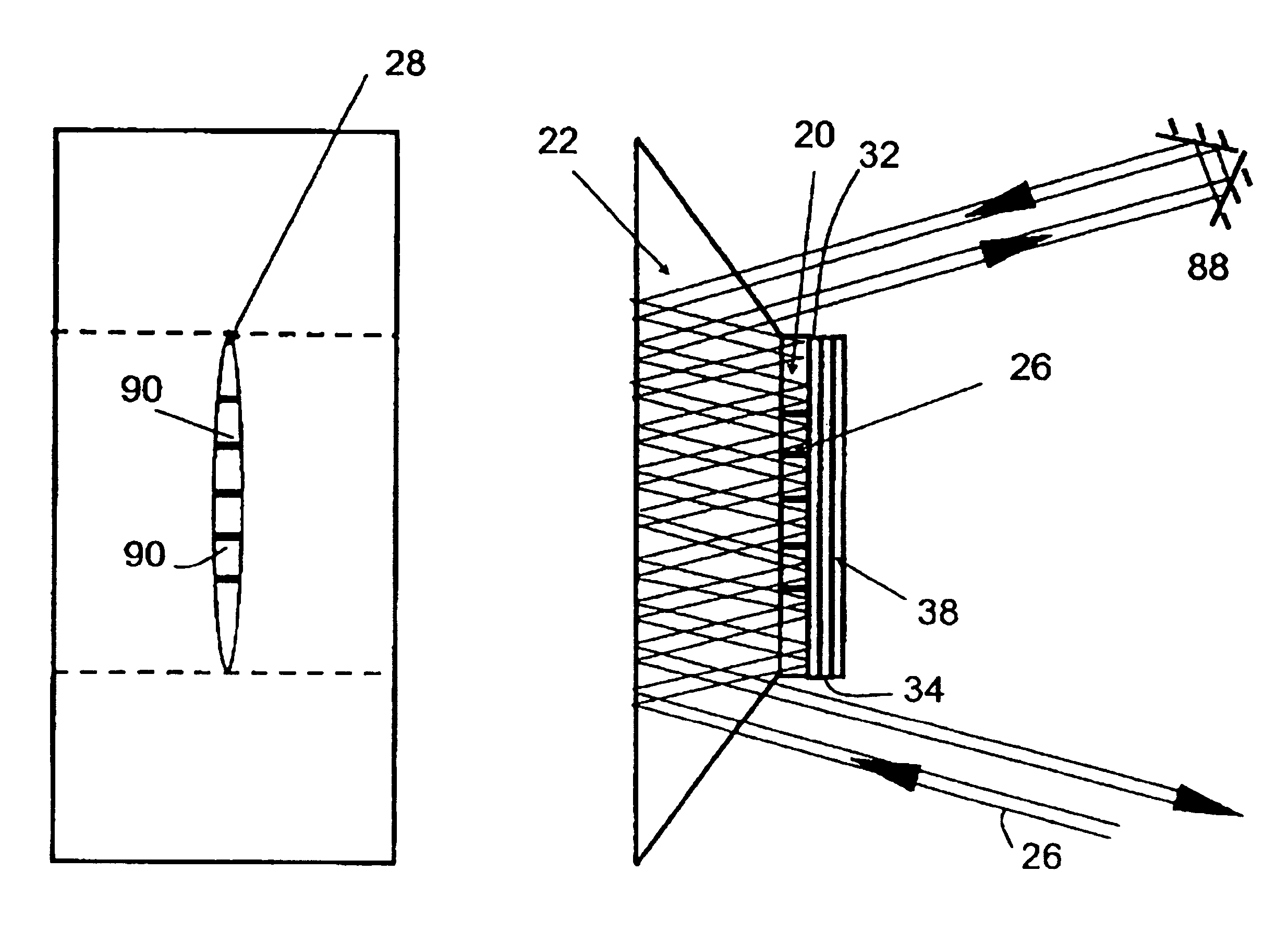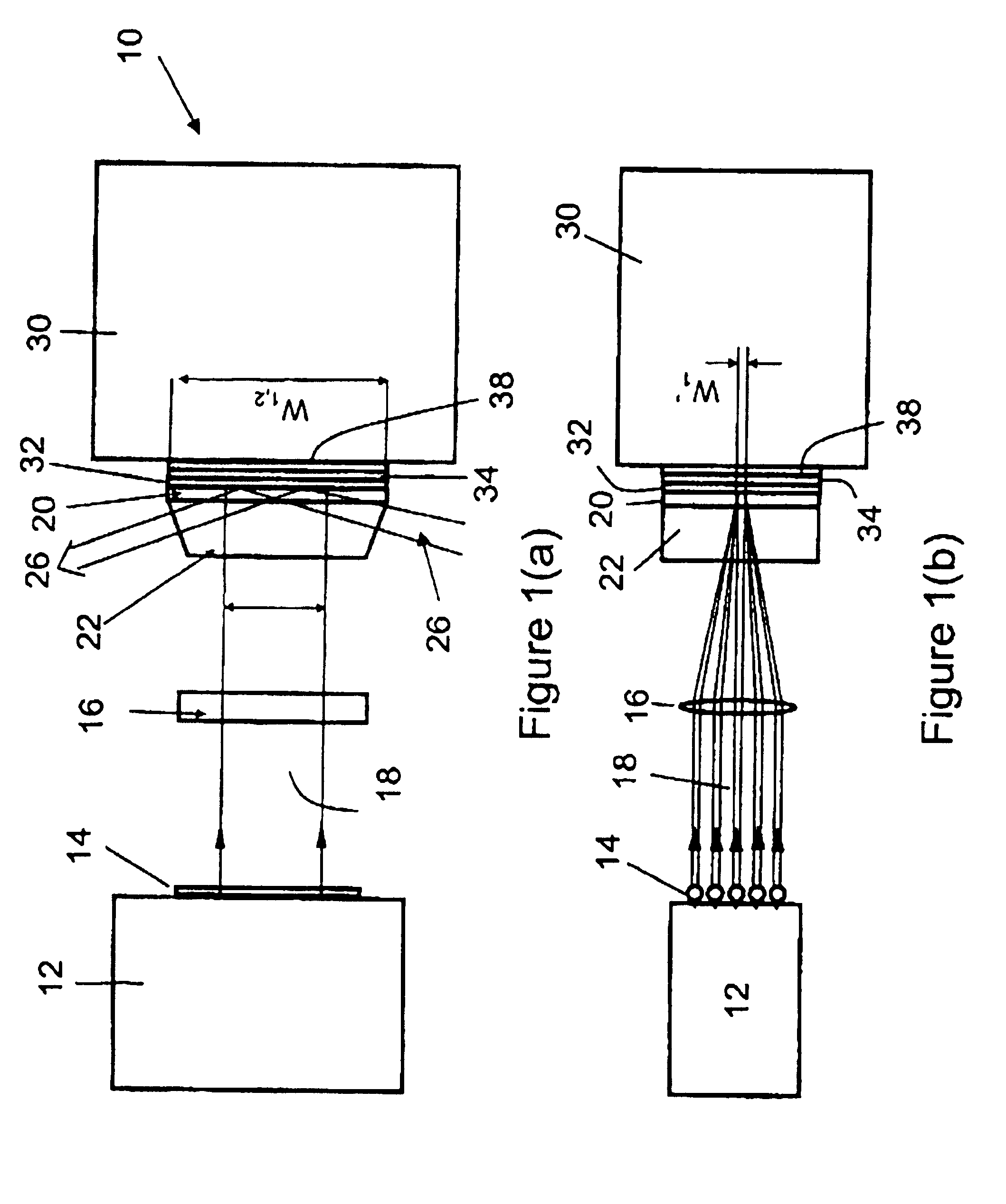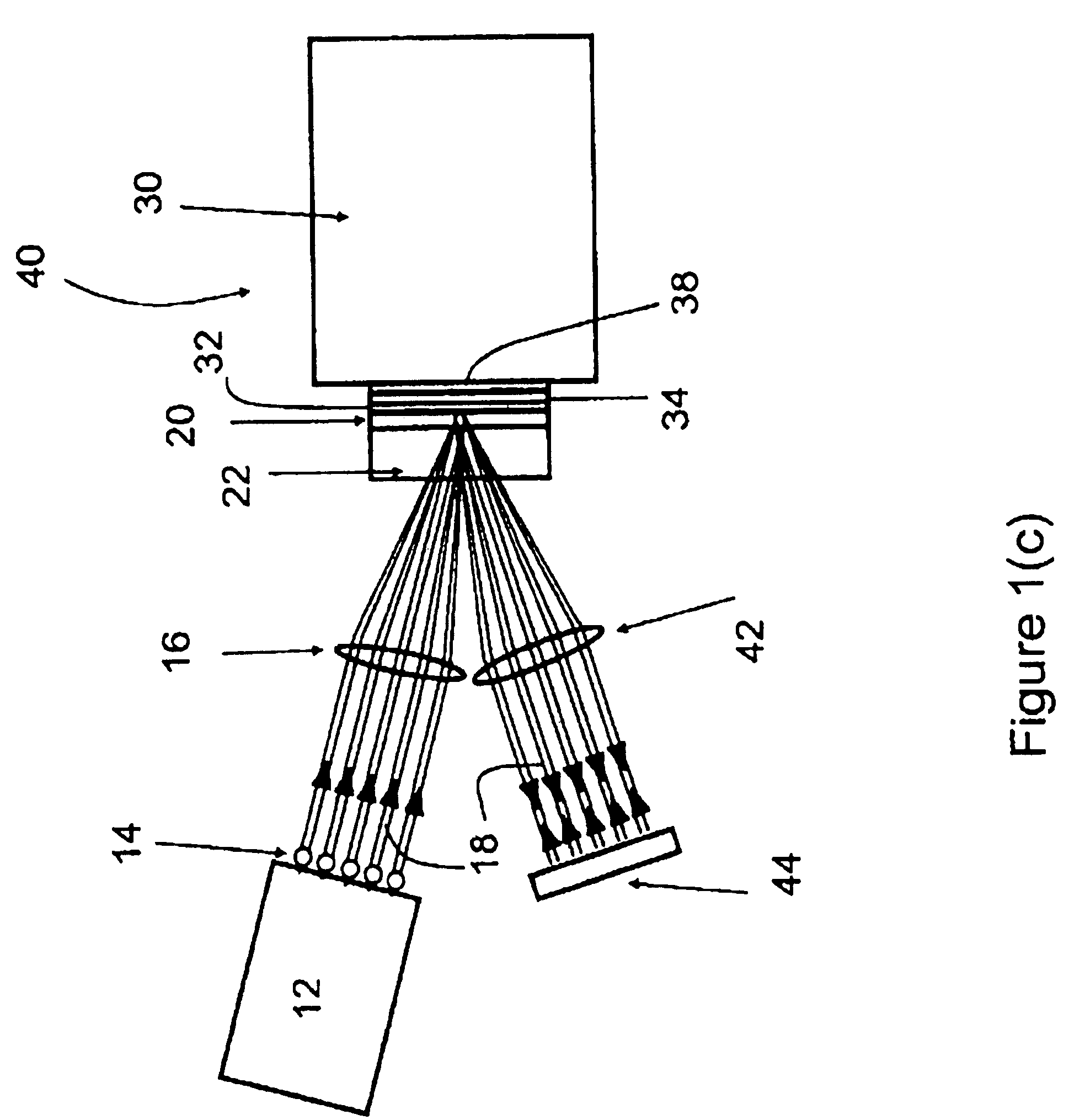Laser amplifiers with high gain and small thermal aberrations
a laser amplifier and thermal aberration technology, applied in lasers, semiconductor lasers, active medium materials, etc., can solve the problems of reducing the working distance over which the beam can achieve its tightest focus, reducing the brightness of the source, and limiting the scope of applications, so as to achieve high gain and beam quality. high
- Summary
- Abstract
- Description
- Claims
- Application Information
AI Technical Summary
Benefits of technology
Problems solved by technology
Method used
Image
Examples
Embodiment Construction
[0040]The present invention provides a solid-state laser amplifier system for amplifying laser pulses. Basic elements of the solid-state laser amplifier system include: 1) a thin active laser solid of thickness t to absorb light from an appropriate light source (the pump) to create the population inversion and associated heat generation within the smallest value of t possible for the desired output power of the device; 2) a pump source comprised of a laser diode or arrays of laser diodes tuned to the maximum absorption of the laser active atom, ion, or molecule; 3) an optical system to transport the pump light to the laser active solid in such a way as to further confine the absorption of light along the two orthogonal directions in the plane of the thin laser active solid; 4) contact of the thin active laser solid to a cooling device with an appropriate material to give good heat transport and high reflectivity of light at the pump and laser wavelengths; 5) a cooling device that ma...
PUM
 Login to View More
Login to View More Abstract
Description
Claims
Application Information
 Login to View More
Login to View More - R&D
- Intellectual Property
- Life Sciences
- Materials
- Tech Scout
- Unparalleled Data Quality
- Higher Quality Content
- 60% Fewer Hallucinations
Browse by: Latest US Patents, China's latest patents, Technical Efficacy Thesaurus, Application Domain, Technology Topic, Popular Technical Reports.
© 2025 PatSnap. All rights reserved.Legal|Privacy policy|Modern Slavery Act Transparency Statement|Sitemap|About US| Contact US: help@patsnap.com



